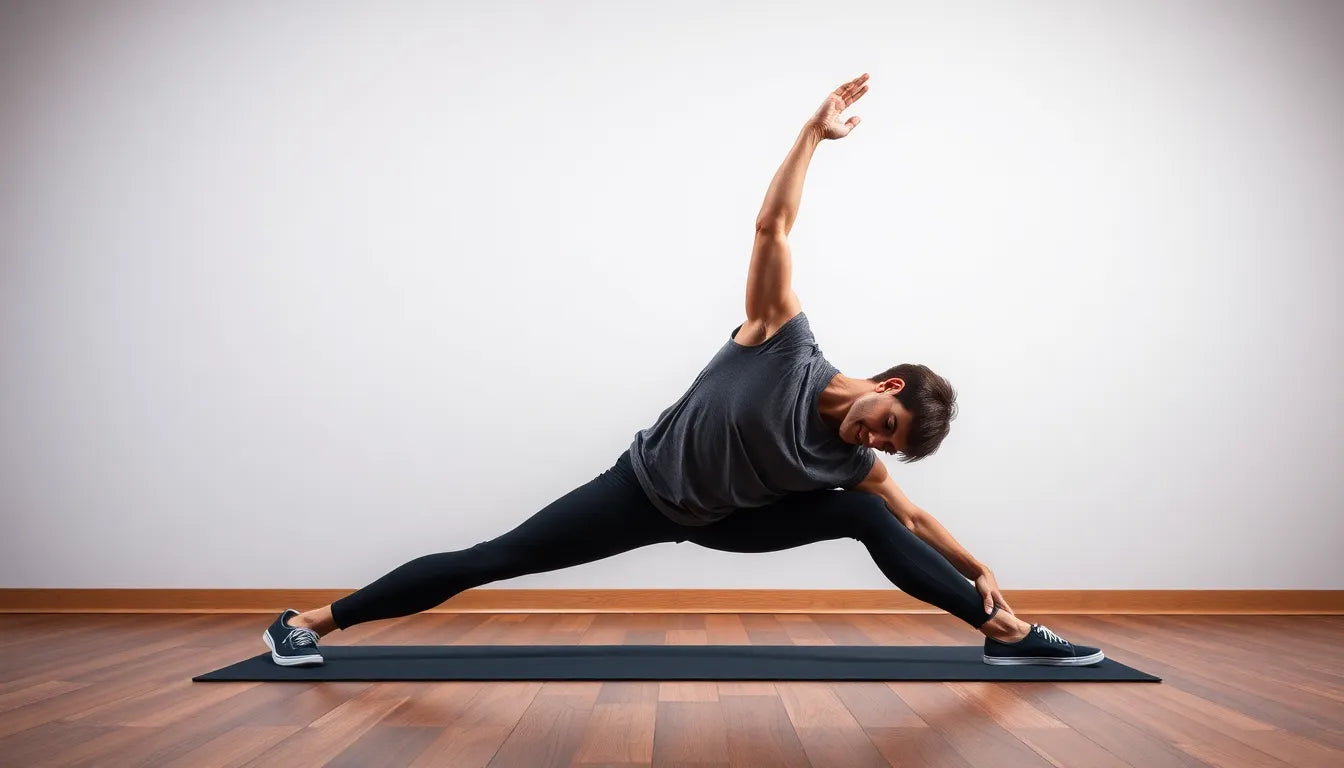Lower back pain, or "ondt i lænden," is a common issue that affects millions of people worldwide, often impacting their daily activities and quality of life. Whether it's caused by poor posture, lack of physical activity, or an acute injury, experiencing discomfort in the lower back can be both frustrating and debilitating. Addressing these pains early is crucial to prevent them from developing into chronic issues that can be more challenging to manage.
Understanding lower back pain
The prevalence of lower back pain highlights the importance of understanding its causes and effects. Many individuals experience this type of discomfort due to sedentary lifestyles, incorrect lifting techniques, or even stress. Lower back pain can manifest as a dull ache, sharp pain, or even radiating discomfort that travels down the legs. It's essential to recognize these symptoms and take proactive measures to alleviate them before they worsen.
Purpose of the exercises
To combat lower back pain effectively, incorporating specific exercises into your daily routine can be highly beneficial. The exercises outlined here are designed to be practical and easy to perform at home, targeting both acute and recurring lower back pain. These exercises aim to improve flexibility, reduce pain, and enhance overall mobility, making daily activities more manageable and less painful.
By regularly engaging in these exercises, you can strengthen the muscles supporting the lower back, increase your range of motion, and ultimately reduce the likelihood of future pain episodes. The key is consistency and proper technique, ensuring that each movement is performed correctly to maximize its benefits.
When to seek help
While many cases of lower back pain can be managed with targeted exercises, it's essential to know when to seek professional help. Certain symptoms, known as "red flags," should prompt a visit to a healthcare provider. These include severe pain that doesn't improve with rest, numbness or tingling in the legs, unexplained weight loss, or difficulty controlling bladder or bowel functions. Recognizing these signs early can prevent more serious health issues and ensure that you receive the appropriate care.
In summary, addressing lower back pain through targeted exercises can significantly improve your quality of life. By understanding the causes, implementing effective exercises, and knowing when to seek professional help, you can take control of your lower back health and enjoy a more active, pain-free lifestyle.

Lumbar support belt
Provides adjustable support to combat and relieve lower back pain during daily activities.
Effective exercises for lower back pain relief
Incorporating specific exercises into your routine can be a powerful way to alleviate lower back pain, or "ondt i lænden," and prevent it from recurring. These exercises are designed not only to relieve pain but also to improve flexibility and strengthen the muscles that support your lower back. Below are some of the most effective exercises that can be performed at home, targeting the core areas to provide relief and enhance mobility.
Cat-camel stretch (cat-cow pose)
The Cat-Camel Stretch, also known as the Cat-Cow Pose, is a gentle exercise that targets spinal flexibility and relieves tension in the lower back. This exercise is particularly beneficial for those experiencing stiffness or discomfort due to prolonged sitting or poor posture.
Instructions: Begin on all fours with your wrists aligned under your shoulders and knees under your hips. Inhale deeply as you arch your back towards the ceiling, resembling a stretching cat. Hold for a moment, then exhale while dropping your belly towards the floor and lifting your head, mimicking a cow. Repeat this sequence for 10-15 repetitions, focusing on smooth transitions and steady breathing.
Sphinx pose (cobra variation)
The Sphinx Pose is a gentle back extension exercise that helps reduce pain associated with forward bending. It's an excellent way to promote back extension without placing excessive strain on the lower back.
Instructions: Lie face down with your elbows positioned directly under your shoulders. Gently press your forearms into the floor, lifting your chest while keeping your lower body relaxed. Hold this position for 10-30 seconds and repeat five times. This exercise can help alleviate discomfort and improve spinal alignment.
Press-ups (extension exercise)
Press-ups are an effective extension exercise that strengthens the lower back muscles and alleviates pain. They are particularly beneficial for those who experience discomfort when bending forward.
Instructions: Start by lying on your stomach with your hands placed under your shoulders. Press your upper body up, keeping your hips on the ground. Hold this position for two seconds at the top before gently lowering back down. Repeat this exercise 8-10 times, focusing on controlled movements and proper form.
Side glide exercise
The Side Glide Exercise is designed to address asymmetrical lower back pain and improve lateral mobility. It is particularly useful for individuals experiencing uneven pain distribution in the lower back.
Instructions: Stand with one shoulder against a wall and your feet shoulder-width apart. Gently push your hip towards the wall, hold for a second, and return to the starting position. Repeat this movement 5-10 times on each side, ensuring a smooth and controlled motion.
Knee-to-chest stretch
The Knee-to-Chest Stretch is a simple yet effective way to relieve tension and improve flexibility in the lower back. This exercise is particularly helpful for those experiencing tightness in the lower back or hips.
Instructions: Lie on your back and gently pull one knee towards your chest, holding it for 2-3 seconds. Switch legs and repeat the stretch. Perform this exercise 8-10 times on each side, focusing on a gentle stretch without forcing the movement.
Child’s pose
The Child’s Pose is a relaxing stretch that gently targets the lower back muscles. It is an excellent way to unwind and release tension after a long day.
Instructions: Kneel on the floor and sit back on your heels. Stretch your arms forward, resting your forehead on the ground. Hold this position for 20-30 seconds, repeating three times. This pose can help soothe the lower back and promote relaxation.
By incorporating these exercises into your daily routine, you can effectively manage lower back pain and enhance your overall mobility. Remember to focus on proper form and listen to your body, adjusting the exercises as needed to avoid discomfort. Consistency is key, and with regular practice, you can experience significant relief from lower back pain.

Men's Posture Shirt™ - Black
Patented NeuroBand™ tech shirt activates muscles and relieves pain for posture support at work or activity.
Progression and safety tips for managing lower back pain
When practicing exercises to alleviate lower back pain, or "ondt i lænden," it's essential to listen to your body and adjust your routine based on your comfort levels. Start with daily exercises focused on immediate pain relief, gradually incorporating strength and mobility exercises over several weeks. This progression helps ensure that your body adapts safely without exacerbating pain.
Pay close attention to how your body responds to each exercise. If you experience increased pain, particularly if it radiates down your leg, it's crucial to stop the exercise immediately. Reassess your form or consult a healthcare professional if discomfort persists. Remember, the goal is to alleviate pain, not to push through it.
When to contact a healthcare provider
While many lower back pain issues can be managed with home exercises, certain symptoms should prompt immediate medical attention. If you experience numbness, weakness, or incontinence, these are red flags that require a healthcare provider's evaluation. Early intervention can prevent more severe issues and ensure you receive the appropriate care.
Frequently Asked Questions
How often should I do these exercises?
Aim to perform these exercises 2-3 times daily for acute pain relief. As you progress and your pain decreases, adjust the frequency to 3-4 times weekly to maintain strength and flexibility.
What if an exercise increases my pain?
If any exercise increases your pain, stop immediately. It's crucial to reassess your technique or consult a healthcare professional if the pain persists. The exercises should relieve discomfort, not intensify it.
Can these exercises prevent future lower back pain?
Yes, regular practice of these exercises can significantly improve your strength and flexibility, reducing the risk of future lower back pain. Consistency is key to maintaining a healthy and pain-free back.
Are these exercises suitable for everyone?
While these exercises are generally safe, individuals with specific conditions, such as herniated discs, should consult a healthcare provider before starting any new exercise regimen to ensure safety and appropriateness.
Incorporating these exercises into your daily routine can lead to significant improvements in managing lower back pain. By understanding your body's signals and progressing safely, you can enhance your quality of life and reduce the likelihood of future pain episodes. Remember, consistency and proper technique are essential for achieving the best results.
Kilder
- FysioDanmark. ”Ondt i lænden øvelser.”
- Vejle Rygklinik. ”Lændesmerter øvelser.”
- Zency. ”7 øvelser mod ondt i lænden.”
- Regionshospitalet Randers. ”Rygsmerter øvelser.”
- Vores Puls. ”Ondt i lænden? Prøv de her 6 øvelser.”
- Smertefys. ”Ondt i lænden.”
- Sundhed RM. ”Ondt i ryggen? Se hvad du selv kan gøre.”


















